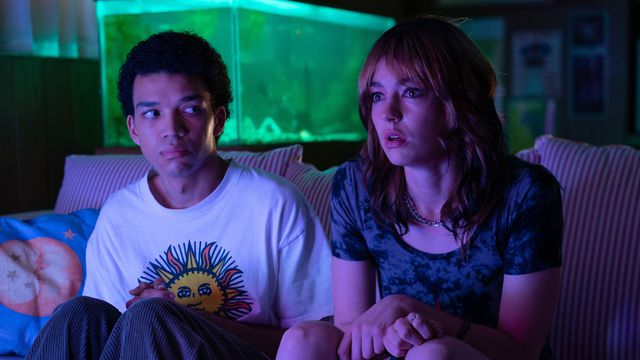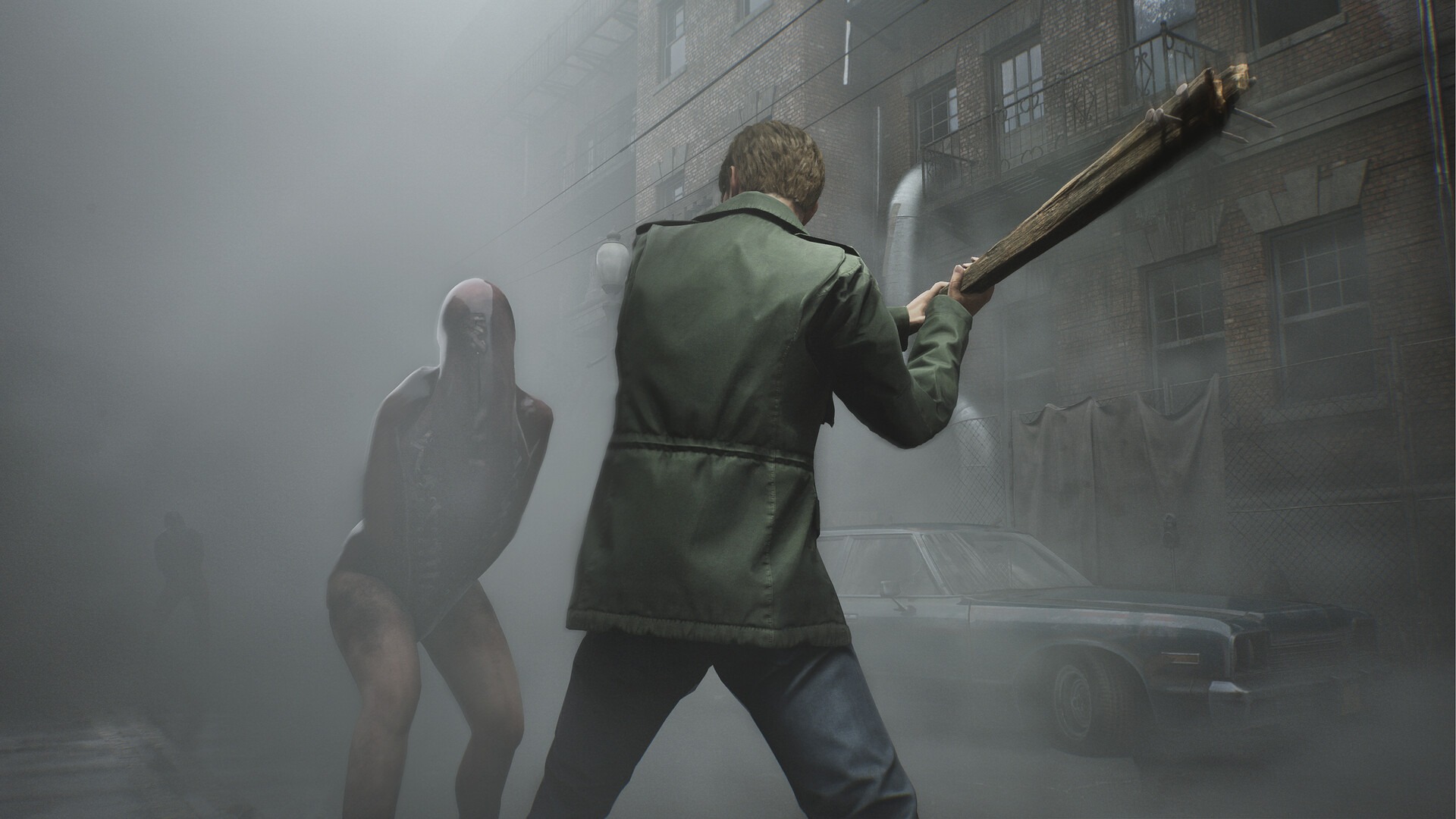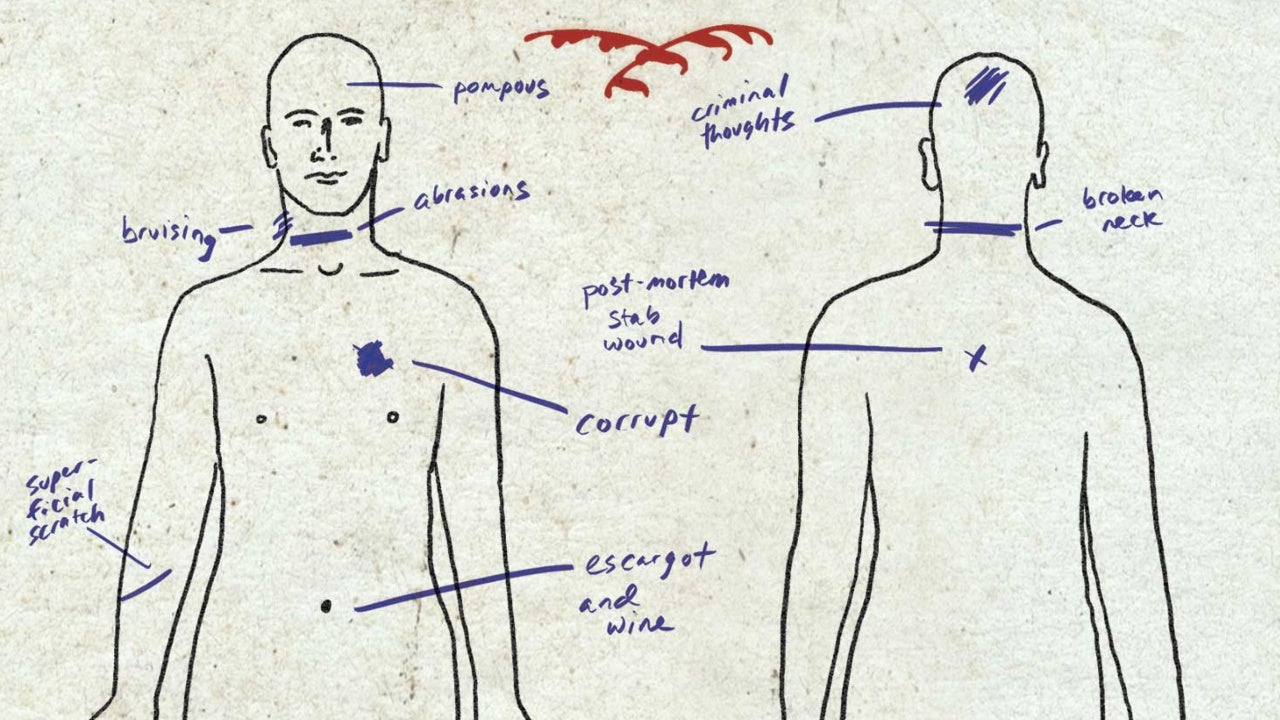Until now, the most prominent image of J. Robert Oppenheimer came from a 1965 interview with NBC, in which he recalls his thoughts in the immediate aftermath of the first ever detonation of a nuclear device. “Now I am become Death, the destroyer of worlds,” he says, quoting the Bhagavad Gita. Between the physicist's haunted expression and the fact that it consumes nearly the entire frame, the clip is the initial particle collision leading to the nuclear chain reaction of Christopher Nolan's Oppenheimer. A three-hour biopic that plays like a jolting thriller, Oppenheimer seldom slows down except to ruminate on questions of all-consuming guilt, as it imagines a vivid psychology lurking within its protagonist’s conscious mind, plagued by doomsday visions that serve as both warning and indictment for humankind. It’s paralyzing, pulse-pounding, breathtaking.
The opening scenes set expectations for the kind of movie that follows, establishing its three-pronged framing device and flashing back to introduce the future father of the atomic bomb (played at all ages by Cillian Murphy) during his college days in the 1920s, when he was particularly lonely and disturbed. The first time we see Robert, gaze aimed downward as in the NBC clip, he stares at droplets of rain rippling in puddles, a calming image that reminds him of hellfire bursting forth from subatomic particles. Even the serenity of nature can’t soothe his troubled mind. These intrusive thoughts recur throughout the film, especially in moments when he’s forced to confront the awesome might of his creation. The way Terrence Malick contrasts his coming-of-age story in The Tree of Life with images of celestial bodies, Nolan’s tale of hubris, regret, and power unleashed is frequently interrupted by images conceived on a subatomic scale, refracted and blown up to the size of an enormous 70mm IMAX screen, as if to put into terrifying context just how much destruction can be wrought from something so infinitesimally small. It’s Nolan’s Tree of Death.
Two governmental hearings draw us into Robert’s past, both several years after the bombings of Hiroshima and Nagasaki. One, presented in washed out color, challenges Robert’s loyalty to the United States in 1954, while another, shown in black and white, puts former Atomic Energy Commission Chair Lewis Strauss (Robert Downey Jr.) – a former ally and eventual adversary of Robert’s – in the hot seat in 1959. The latter often harkens back to the former, which itself traces Robert’s scientific career through the 1920s and ’30s until his eventual recruitment to the Manhattan Project in 1942. It would be easy to compare this structure to that of The Social Network, another depiction of consequential real-world events that weaves a single story from a pair of depositions. But the dueling hearings in Oppenheimer create clashing perspectives that occasionally result in overlapping and repeated scenes, each from the points of view of Robert and Strauss respectively, with one revealed in (slightly more vivid) color, and the other in monochrome.
The duo’s relationship isn’t the story’s central driving force – that would be the race to build and test the atomic bomb, which takes up a significant chunk of the runtime – but it serves a vital thematic purpose. Oppenheimer delves into both men’s egos in a manner that eventually builds to a stunning dramatic conclusion that fully unearths the persistent undercurrent of regret stirred by Nolan and draws a layered and explosive performance out of Downey like no other film of the past 20 years. Until that conclusion, the story unfolds as if in free fall, bolting purposefully between numerous scenes in which vital scientific breakthroughs occur, bringing Robert and his merry band of handpicked scientists one step closer to the power of the gods. Plenty of wrenches are thrown in their gears, often thanks to probing questions posed by their own suspicious, Red-Scare’d government, courtesy of some well-cast security officials – Dane Dane DeHaan, Casey Affleck and David Dastmalchian play administrative bastards of the highest order – a hurdle which enhances the existing intensity.
As the enigmatic Robert – a professor orbited by excited students like electrons around a nucleus – Murphy brings a requisite sense of poise and command that contrasts his gaunt stature. But he wears a perpetually distraught expression that can be deciphered even behind his put-upon smiles. He doesn’t look “like he’s seen a ghost,” so much as he looks like he’s been seeing them all his life, forcing one to wonder whether his ability to envision the building blocks of existence propelled him to greatness, or cursed him for all eternity. Given the story’s structure, Oppenheimer unfolds like a memory tinged with regret – but was it fated? Murphy’s face seems to constantly ask this question too.
The highlights of the star-studded supporting ensemble are, for once, the women in Nolan’s cast, a pair of female characters whose involvement with America’s Communist Party (and Robert’s association with them) draws the ire of Uncle Sam. Florence Pugh plays Jean Tatlock, a volatile romantic presence in Robert’s life, and the center of a surprisingly imaginative and unsettling sex scene, while Emily Blunt plays Kitty, Robert’s long-suffering spouse. She’s significantly more well-rounded than the standard-issue supportive wives of Hollywood biopics, who do little else than sing the praises of their partners’ genius. Instead, Kitty is perhaps the only person who knows the true Robert inside out: the man behind the martyr, skillfully disguised behind his faux humility and a grating “lonely genius” persona. J. Robert Oppenheimer is a paradox only she can solve, and it weighs on her constantly.
Much of Murphy’s screen time is spent opposite either David Krumholtz as Robert’s warm and witty friend Isidor Isaac Rabi, or Matt Damon as Leslie Groves, a military engineer placed in charge of The Manhattan Project’s security. It’s yet another role that speaks to Damon’s commitment to being an anti-movie star, his character’s frustrations with Robert and his desperation to be heard (often unsuccessfully, given the caliber of intellect that surrounds him) taking center stage in humorous ways. A who’s who of 20th century scientists veers in and out of the story’s purview – it’s the Avengers of physicists: Feynman, Bohr, Neddermeyer, Einstein, Heisenberg – but ultimately, the focus remains on Robert’s journey through cognitive compartmentalization, as he self-justifies building the very thing he has always feared.
Nolan, who adapted the screenplay from the biography American Prometheus, performs numerous filmmaking feats alongside his Tenet collaborators, from cinematographer Hoyte van Hoytema, to composer Ludwig Göransson, to editor Jennifer Lame. The gigantic IMAX frame, nearly as tall as it is wide, is used to tremendous effect, not only to capture spectacle, but to push in dramatically to close-ups, and to portray sweeping New Mexico landscapes in which Robert is positioned as history’s tiniest, loneliest man. Göransson, meanwhile, crafts propulsive and unnerving music out of atmospheric sounds, like the stomping feet of a riled-up crowd, which steadily builds in tempo. Working in tandem with sound designer Randy Torres, Nolan and Göransson know exactly when to forego the otherwise thundering effects and let silence take full control. Even whispers of human breath – in both relief and abject horror – become their own symphony when Robert’s mind becomes most fixated on catastrophe shortly after the Trinity test. Here the filmmaking reaches its razor-wire zenith, wrapping the character in his deepest fears and anxieties by making them horrifyingly real. It’s arguably the best-directed scene Nolan has ever committed to film. You’ll know it when it happens.
Lame draws us in and out of these living nightmares through intimate sensations of sound and touch, as if the world were suddenly so volatile that the slightest bit of stimuli might set it ablaze. Even the bomb itself is so weathered and textured as to feel alive, a slumbering beast waiting to be awoken. Watching Oppenheimer in 2023, we know the world doesn’t end in 1945 – but it always feels like it could, at any moment.
That adrenaline and its stomach-churning aftertaste never wear off. The fear of death and destruction continues to radiate as if through the screen itself, making Oppenheimer as much about the future as it is about the past. Nolan maintains this momentum through not only scenes of wartime innovation, but more contained sequences too, presenting a sterile, claustrophobic security hearing in the most breakneck cinematic form. (Bureaucracy has never seemed so terrifying.) At its core, the movie always circles back to the question of J. Robert Oppenheimer’s place in history, as seen by others, and by himself. The conclusions it comes to are far from easy, depending more on the movie’s frequent, awe-inspiring abstractions than its words. It’s an earth-shaking cinematic vision unlike anything else in Nolan’s filmography, the kind of film whose aesthetic impact might just leave you shuffling out of the theater in silent reflection – a sensation few modern Hollywood directors are capable of instilling.









